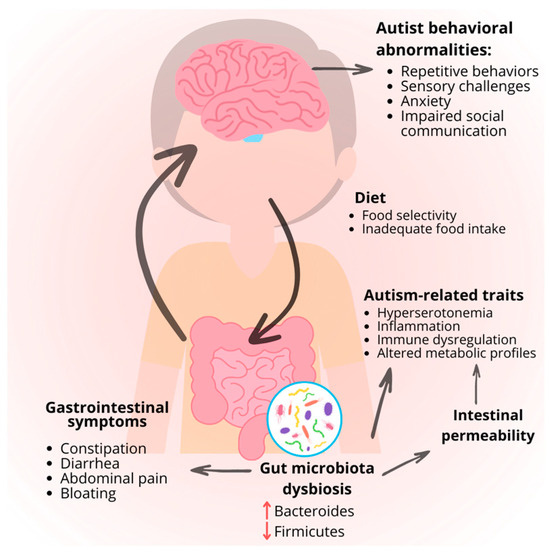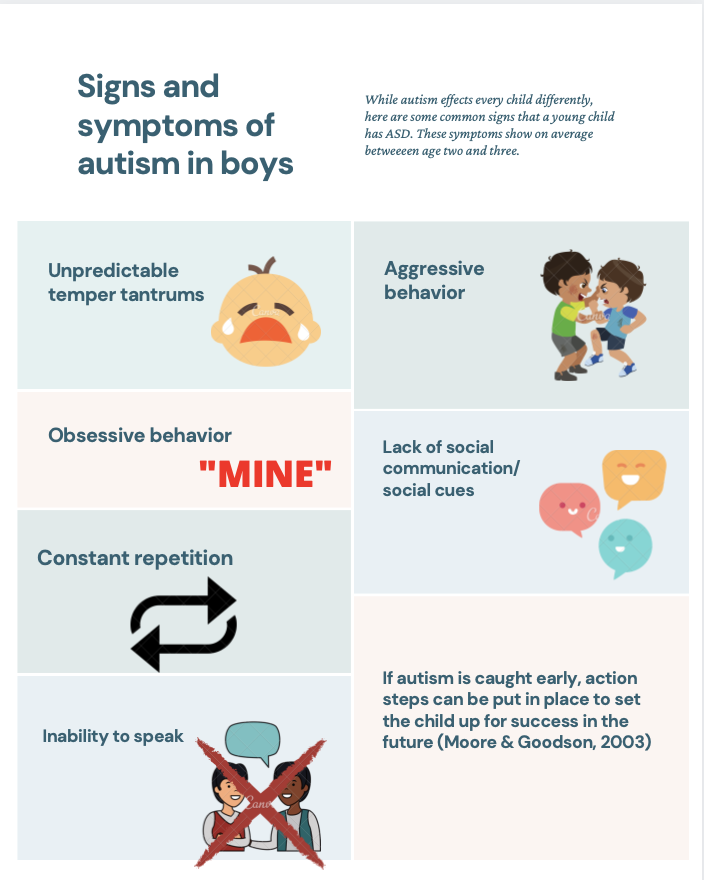Promoting Inclusivity: How to Develop Supportive Environments for Those With Behavioral Autism
Producing supportive atmospheres for people with behavioral autism is crucial for fostering inclusivity. You might wonder how recognizing crucial features and challenges can pave the way for efficient techniques. By focusing on compassion and interaction, you can make a considerable effect. Yet what details actions can you take to ensure these individuals flourish in different settings? Let's discover the strategies that can cause meaningful modification.
Understanding Behavior Autism: Key Attributes and Challenges
Recognizing behavior autism involves identifying its essential attributes and the challenges it offers. Individuals with autism commonly exhibit problems in social communication, communication, and recurring habits. You might observe that they struggle to analyze social cues, which can cause misunderstandings in everyday situations. Sensory level of sensitivities are additionally typical, ensuring settings overwhelming.

Supporting somebody with behavior autism suggests being individual and versatile. You'll need to produce a setting that lessens stress and anxiety and promotes convenience.
The Function of Compassion in Supporting Individuals With Autism
Compassion plays a vital function in sustaining people with autism by aiding you comprehend their unique perspectives. By practicing energetic listening techniques, you can develop emotional links that cultivate count on and communication - Autism Behavioral Therapy. This understanding not only improves your relationship but additionally develops a more supportive setting for them
Recognizing Distinct Perspectives
When you take into consideration the special perspectives of people with autism, it comes to be clear how vital compassion is in supplying effective support. Everyone's experience is formed by different sensory level of sensitivities, interaction styles, and emotional reactions. By entering their footwear, you can start to recognize their world. This understanding helps you respond a lot more thoughtfully to their difficulties and demands. Identifying their staminas and battles fosters a deeper connection, building trust fund and motivating open communication. Your capacity to empathize allows you to create an atmosphere where they feel risk-free, valued, and recognized. This supportive atmosphere equips people with autism to share themselves, inevitably improving their wellness and development. Empathy is not just an ability; it's an important structure for significant connections.

Energetic Paying Attention Methods
Energetic paying attention strategies play a vital function in sustaining individuals with autism, as they foster a much deeper connection and understanding. You reveal that you value their sensations and ideas when you engage in active listening. Maintain eye get in touch with, nod, and use spoken affirmations to signal your listening. Reword what they claim to validate your understanding, and ask flexible questions to urge further expression. Avoid disrupting, allowing them to express their points totally. Be conscious of your body movement; it should be open and inviting. By practicing these strategies, you develop a secure space where individuals feel heard and respected, eventually enhancing their interaction and psychological health. Empathy radiates through when you actively listen, enhancing your relationship with them.
Structure Emotional Links
Developing a helpful setting through energetic listening naturally results in building emotional connections with individuals on the autism spectrum. When you truly involve, you're not simply hearing their words; you're recognizing their sensations. This compassion promotes depend on, allowing them to reveal themselves freely. Usage nonverbal cues, like eye get in touch with and nodding, to show you exist and invested in their experiences.

Effective Communication Techniques for Inclusivity
Effective interaction strategies play a vital role in cultivating inclusivity for individuals with behavior autism. Start by utilizing clear, simple language that's understandable. Prevent expressions or abstract expressions; they can be complex. Instead, be particular and straight regarding what you imply.
Nonverbal signs are just as important. Take note of your body language, faces, and intonation, as these can convey greater than words. Maintain eye contact and usage gestures to boost understanding.
Additionally, be client and offer people time to procedure information. Urge them to express their ideas and sensations, showing that their input is valued.
Active listening is vital; repeat or paraphrase what they've stated to validate understanding. Adapt your interaction approaches based on specific preferences, whether it's via aesthetic help, composed directions, or other devices. This individual touch enhances inclusion and aids develop significant links.
Tailoring Assistance Solutions in Educational Setups
In instructional setups, you'll wish to focus on Individualized Education Program (IEPs) that deal with each student's special needs. Developing a sensory-friendly class style can additionally enhance discovering by minimizing diversions and advertising convenience. Together, these methods can foster a setting where students with autism flourish.
Individualized Education Strategies
While maneuvering through the complexities of autism in educational setups, Individualized Education and learning Plans (IEPs) play an essential duty in customizing support systems to meet each student's special needs. It's important to team up with instructors, professionals, and your child to create a comprehensive strategy. Remember, a reliable IEP is not simply a paper; it's a living device that adapts to your child's evolving requirements, guaranteeing they prosper in their instructional setting.
Sensory-Friendly Class Style
Producing a sensory-friendly class can substantially boost the understanding experience for trainees with autism. Begin by assessing your classroom's lights; soft, natural light can minimize overstimulation. Include adaptable seating choices, like bean bags or flooring cushions, to enable students to find their comfort zone. Use calming colors on wall surfaces and decor to create a comforting ambience. Take into consideration adding sensory edges with fidget devices, noise-cancelling headphones, or heavy coverings for pupils who Full Report require breaks. Arrange spaces to lessen clutter, assisting students concentrate much better. Establish clear regimens and signals to interact adjustments, alleviating stress and anxiety. By making these adjustments, you'll develop an environment where pupils with autism really feel extra sustained and taken part in their understanding journey.
Producing Inclusive Workplaces for People With Autism
To cultivate a truly inclusive workplace for people with autism, companies need to identify the special toughness and difficulties these people bring. Beginning by promoting clear communication and providing thorough task descriptions that lay out expectations. This assists individuals understand their functions better and minimizes anxiety.
Take into consideration applying adaptable job plans, such as remote job or readjusted hours, to suit various personal preferences and sensory demands. Educating your team on autism awareness is necessary; it can boost compassion and promote a helpful ambience.
Producing silent areas where employees can charge during demanding minutes can also make a substantial difference. Motivate making use of assistive technologies that aid boost and simplify jobs performance.
Ultimately, valuing diversity will certainly not just profit people with autism however will certainly likewise enrich the entire team, leading to a much more vibrant and cutting-edge work environment. Welcome these methods to grow an atmosphere where everybody can flourish.
Urging Social Communication and Community Engagement
Urging social interaction and neighborhood involvement is important for people with autism, as it assists develop confidence and fosters significant connections. To produce an encouraging atmosphere, beginning by giving possibilities for individuals to link with others in a comfortable setting. Arrange team tasks that accommodate different rate of interests, such as art classes, sports, or area service jobs.
You can additionally promote smaller sized, structured gatherings where everybody can share their experiences and thoughts. Urge open interaction by modeling respectful listening and compassion. Establishing peer mentorship programs can assist create bonds and supply guidance.
Include families and local organizations to widen the assistance network and advertise inclusive events. Bear in mind, the trick is to create secure spaces where people with autism really feel valued and comprehended. By cultivating these links, you'll assist them prosper socially and create a sense of belonging within the neighborhood.
Resources and Equipments for Structure Supportive Settings
While building helpful environments for individuals with autism might appear difficult, numerous resources and tools can make the procedure simpler and more effective. Initially, take into consideration utilizing visual assistances like routines or social tales to assist people understand their social scenarios and day-to-day regimens. Apps created for communication, such as AAC (Augmentative and Different Interaction) devices, can likewise boost communication.
Additionally, training programs for team and volunteers on autism understanding can advertise empathy and understanding in your community. Look right into regional companies that use resources or workshops customized for supporting people with autism.
Producing sensory-friendly spaces with calming components-- like soft lighting and quiet locations-- can profit those who might end up being overwhelmed. Finally, establishing links with neighborhood assistance teams can give ongoing advice and comments, assisting you refine your method and guarantee inclusivity for all.
Regularly Asked Inquiries
How Can I Inform Others About Behavioral Autism Successfully?
To educate others concerning behavior autism successfully, share individual tales, provide clear sources, and urge open discussions - Aba Therapist. Use relatable examples and highlight go now the importance of recognizing various point of views to foster empathy and understanding
What Are Typical Misconceptions Regarding Autism That Required Dealing With?
You could believe autism just impacts communication skills, yet that's simply one aspect. Many believe it's solely a childhood years condition, when in truth, it extends throughout all ages and shows up in different ways for every person.
Exactly How Can I Support for Autism Understanding in My Neighborhood?
You can support for autism recognition by organizing community events, sharing helpful resources, and teaming up with local organizations. Use social media to spread the word, and urge open conversations to promote understanding and approval.
Are There Details Sensory-Friendly Spaces for Individuals With Autism?
Yes, many areas Related Site supply sensory-friendly spaces, like quiet spaces in collections, specialized backyard, or assigned hours at galleries. You can discover local resources and advocate for more comprehensive rooms to sustain people needing them.
What Function Do Family Members Play in Sustaining People With Autism?
Family participants play a necessary duty in supporting individuals with autism. You can offer inspiration, understanding, and perseverance. By proactively getting involved in their lives, you aid develop self-confidence and foster independence, creating a supporting setting.
Developing supportive atmospheres for people with behavior autism is essential for promoting inclusivity.Developing an encouraging setting through active paying attention naturally leads to developing emotional links with individuals on the autism spectrum. Producing Inclusive Workplaces for Individuals With Autism.
To promote an absolutely inclusive workplace for individuals with autism, companies must recognize the special toughness and difficulties these people bring. Remember, the secret is to create risk-free rooms where people with autism feel valued and recognized.